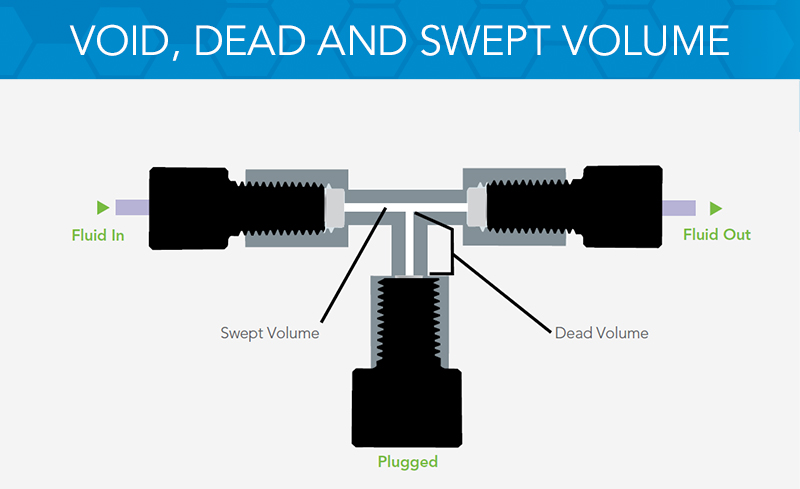

Void, Dead, and Swept – an Interesting Concept
Often, when making connections, people want more information on the amount of “dead volume” in the connection. However, most people who inquire about the dead volume are really wanting to know just how much internal volume exists within a connection, not how much of that internal volume is considered “dead.”
But What Do These Terms Mean?
Specifically, three terms describe the internal volume of a product: dead volume, swept volume and void volume.
- Dead Volume is that portion of the void volume that is out of the flow path. (See Figure below)
- Swept Volume is that portion of the void volume in a connection directly in the fluid pathway. (See Figure below)
- Void Volume is simply another way of describing the total internal volume. It is defined as any space within a connection into which fluid can flow.

Mathematically speaking, when dead volume and swept volume are added together, the total equals the overall void volume.
Void Volume = Dead Volume + Swept Volume
Dead volume, however — particularly in capillary connections — can cause some very undesirable chromatographic effects, including:
- Analysis delay
- Broadened Peaks
- Poor Resolution
- Sample Carry-Over
- Split Peaks
- Gas Collection
If your application is not chromatography-related, dead volume can still lead to problems, including:
- Sample-to-Sample Contamination
- Dispensing Inaccuracies
- Precipitation Zones
In other words, no matter what your analysis technique is, dead volume will likely have a negative impact. Therefore, in addition to keeping the volume inside the connection to a minimum, all dead volume should be removed from the connection.
For more tips on fittings, view our complete Fittings 101 Guide.
